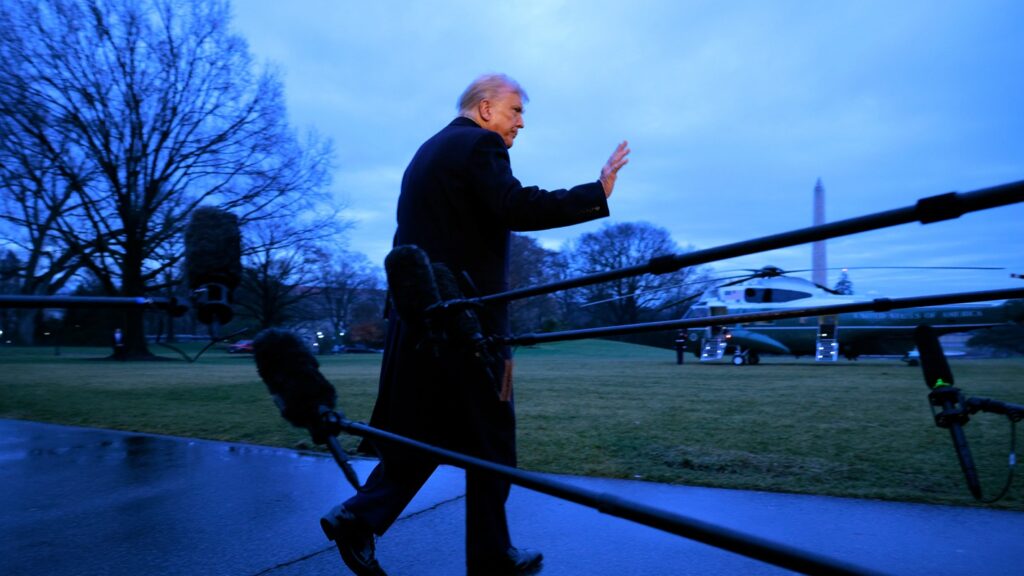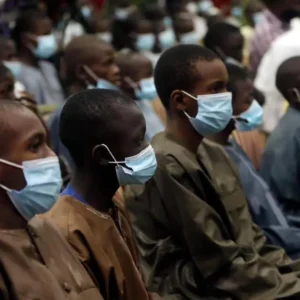Beijing Hits Back with Tariffs on U.S. Goods
LONDON & HONG KONG – Trade tensions between the United States and China have escalated once again as Beijing announced new tariffs on select American imports in response to President Donald Trump’s recent trade war.
Chinese officials revealed Tuesday that certain U.S. goods will be subject to tariffs of up to 15%, marking a swift retaliation against Trump’s planned levies on Chinese exports.
“China firmly opposes the U.S. practice and urges the United States to correct its wrong practices immediately,” the Chinese Ministry of Commerce stated.
Starting February 10, China will impose a 15% tariff on U.S. coal and liquefied natural gas, while a 10% tariff will apply to other products, including crude oil, agricultural machinery, and pickup trucks.
A Rapidly Escalating Trade Conflict
China’s move follows Trump’s deadline for a 10% tariff on Chinese imports into the U.S., a policy expected to be enacted via executive order, according to the White House.
Meanwhile, Trump and Chinese President Xi Jinping are expected to hold discussions in the coming days, though it remains uncertain if they will speak before China’s retaliatory tariffs take effect.
The two leaders last spoke in January, just before the U.S. ban on the Chinese social media giant TikTok was set to be enforced.
Broader Trade Tensions
On February 1, Trump announced tariffs targeting the U.S.’s three largest trading partners:
- 25% tariffs on goods from Mexico and Canada
- 10% tariffs on Chinese imports
While these duties were initially set to take effect on Tuesday, the White House has temporarily delayed tariffs on Canada and Mexico for a month.
Trump to Cut Funding to South Africa Over Land Expropriation Bill
China Takes Its Case to the WTO
Beijing wasted no time in denouncing the U.S. measures, calling them a violation of World Trade Organization (WTO) rules and labeling them as “typical unilateralism and trade protectionism.”
China has officially taken the dispute to the WTO dispute settlement mechanism and warned that these tariffs will severely disrupt the global economy.
“The U.S. practice seriously undermines the rules-based multilateral trading system, disrupts the stability of the global industrial chain and supply chain, and harms economic cooperation between our nations,” China’s Ministry of Commerce said.

New Tariffs Target U.S. Agriculture and Energy
China’s State Council Tariff Commission released a list of 72 U.S. products that will face the new 10% tariffs—a majority of which are agricultural and industrial goods such as:
- Tractors
- Harvesters
- Large-scale farming equipment
Meanwhile, only eight types of coal and natural gas will be subject to the higher 15% tariff.
Trade War: U.S. Companies Caught in the Crossfire
Beyond tariffs, Beijing is also taking aim at U.S. tech giants. The Chinese government has announced a probe into Google for possible anti-monopoly violations, adding another layer of tension to an already strained relationship between Washington and Beijing.
Canada and Mexico Respond
Trump’s tariffs on Canada and Mexico have also triggered backlash.
- Canada has threatened counter-tariffs of its own.
- Mexico has deployed troops to its northern border in response to U.S. concerns over immigration and drug trafficking.
The Bigger Picture
U.S. officials argue that these tariffs serve as a powerful bargaining chip against China. The Trump administration points to the 2018-2019 trade war, in which tariffs ultimately led to a bilateral economic agreement.
“President Trump acted with conviction to impose tariffs on imports from China, using that leverage to reach a historic economic deal,” the White House stated.
However, with both sides now digging in, the risk of a prolonged and damaging trade war appears greater than ever.






